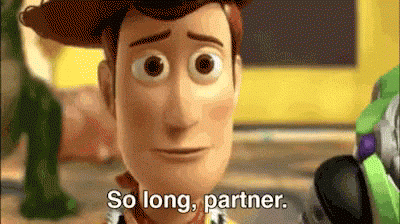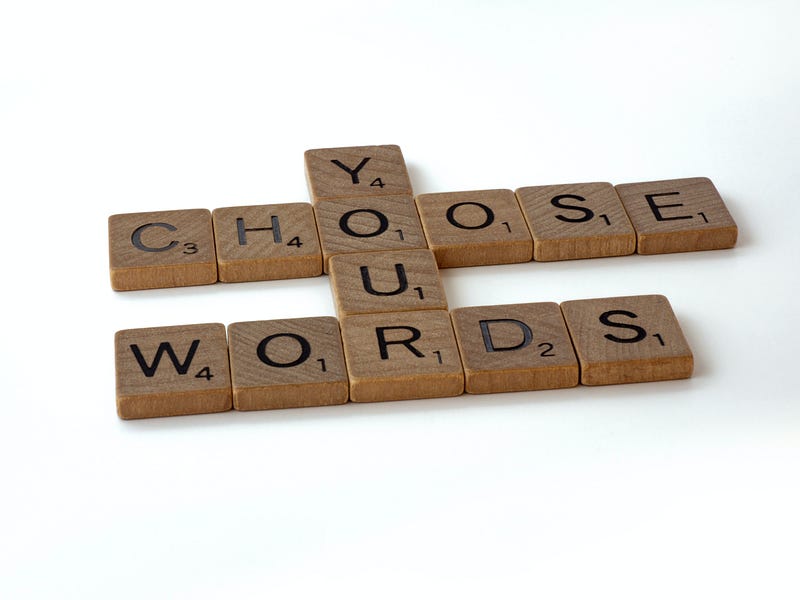Why Is Copyediting Important?
Copyediting is quality assurance.

Photo by
on
Think you can get away with not copyediting your content? Think again.
Your audience values error-free content. The quality of your written content affects their purchases and their perception of your brand.
No matter what type of content you are releasing to the world, you need a copy editor. Nothing says unprofessional and untrustworthy like poor language.
Plenty of research confirms the value of copyediting.
Copyediting is an important function for the integrity of both print and digital content, a 2007 study reported.
Readers can tell when a news article isn’t edited, and it affects their perceptions about the news and their willingness to pay for it, according to a 2015 study. Even college-aged people value edited content free of errors: “Digitally savvy young people picked up on editing differences and reacted negatively to unedited content,” says an American Press Institute blog post about the study.
People have similar standards for marketing copy. A SurveyMonkey survey found that 85% of millennials are less likely to buy a product advertised with errors, and the same is true for 83% of people with a household income of $75,000 and higher.
Poor spelling and grammar are warning signs of an email scam.
And, of course, editing contributes to the success of books: 74% of book authors who earned more than $5,000 in sales invested in editing, while 53% of authors who earned less than $100 in sales did not invest in editing, according to a 2017 BookBaby survey of nearly 8,000 indie authors.
But I get it. You have a lot on your plate. Editing your content falls by the wayside in the rush to share it with the world.
That’s where Pristine Editing comes in!
We offer professional editing services that integrate seamlessly into your existing workflow. Send us your copy, turn your attention to other tasks, and in no time at all, we’ll return your pristine content to you.
Your audience will get the full impact of your words without being distracted by weird phrasing or misplaced punctuation.
Whether you’re a publication with tight deadlines, a freelancer or a small business launching a website and a newsletter, or a large company or organization about to release a white paper or cross-platform marketing campaign, Pristine Editing can contribute to the unwavering high reputation of your brand.
Kick-start a conversation with Pristine Editing by filling out this two-minute project request form.
Enjoy this post? Buy me a coffee in support.
Hi, I’m Jaime, editor and owner of Pristine Editing LLC. To get to know me better, and for more editing tips, sign up for my quarterly email newsletter! You can also follow me on LinkedIn and Instagram. And don’t miss out on my free style guide template.
6 Tabs I Always Have Open as I Copyedit
These references are my constant companions
Ever wonder what goes on behind the scenes when a copy editor polishes your content? It’s mostly reading a sentence three times and sometimes going back to read it a fourth; pondering; and looking things up.
As editor Crystal Shelley of Rabbit with a Red Pen once said, “Editing is just looking things up until you die.”

Photo by
on
What are editors looking up?
correct style (e.g., does the client want it to appear as 10 or as ten, as colour or color; do they use accent marks or no; do they like the ellipsis character mark or the three periods plus three spaces)
correct spelling
dates and job titles, etc. (to confirm them, in a sort of light fact check)
obscure grammar rules we don’t know off the top of our head or want to double-check for a tricky situation
definitions of words to make sure the writer has used them well
The list goes on.
To look up that stuff as I copyedit, I always have these six tabs open:
The Chicago Manual of Style or The Associated Press Style Book
clients’ house editorial style guide
site:website.com and “X”
The Chicago Manual of Style hyphenation guide
online search engine
‘The Chicago Manual of Style’ or ‘The Associated Press Style Book’
The two most typical style guides my clients use. Depending on the project, I’ll have one of them open for reference (I subscribe to the online versions). These resources offer guidance on everything from grammar, punctuation, and formatting to the correct usage of numbers, abbreviations, capitalization, and more.
Clients’ house editorial style guide
Many clients—though not all—use a house style guide in addition to one of the industry-wide guides above. I love when a client has an editorial style guide, but for clients who don’t, I can easily create one. These house guides contain specific preferences and brand-related language use that enables me to tailor the copyediting process to each client.
site:website.com and “X”
This online search engine technique comes in super handy mainly when a client doesn’t have a house style guide, and even when they do.
Typing site:website.com into a search enginerestricts the search results to only pages from the specified website. To search for a specific word or phrase, I add it in quotation marks after site:website.com and the word and: e.g., site:website.com and “X” searches for the exact word or phrase “X” on that site.
I use this tool to quickly find out how a client has typically styled a word or phrase on their website. It’s a great way to determine how a publication or organization has most commonly styled a word—even if the staff themselves aren’t sure. For example, imagine my client is The Daily News Bites, and the newspaper has a house style guide, but it doesn’t specify to use healthcare or health care as a noun. I can search site:dailynewsbites.com and “health care” as well as site:dailynewsbites.com and “healthcare” to see which style the newspaper uses most often (and then I can add that preference to the style guide I make for the client).
To use this tool successfully, I need a search engine that lists the number of search results so I can determine which style is most common.
That’s the entire reason I stopped using Google Search and now use Microsoft Bing. I’d love to use a data-privacy search engine like DuckDuckGo (I did use Neeva before it went belly up), but again, seeing the number of search results is critical, and DuckDuckGo doesn’t allow that.
https://x.com/PristineEditing/status/1483573898973220870
Merriam-Webster
My go-to dictionary. In May 2024, AP style made M-W its official primary dictionary, which means I can use M-W for all of my clients, whether they use Chicago or AP style.
I most often use Merriam-Webster to:
check hyphenations
see if a foreign word is listed (if a foreign word appears in M-W, it doesn’t need to be italicized, as is common style for foreign words — although there are exceptions to that)
clarify the precise meaning of a word in context to make sure the writer’s word choice is accurate
The ‘Chicago Manual of Style’ hyphenation guide
Half the time I’m searching for a word in Merriam-Webster, it’s simply to check if a word is hyphenated or not. This guide provides clear rules for hyphenation (for Chicago style, that is), ensuring uniformity of style throughout a document.
Online search engine
I’m constantly searching for nouns and proper nouns—company names, historical figures, scientific terms, etc.—to check that they’re spelled correctly and in the correct case (e.g., capitalized or lowercase).
This often leads to a little fact-checking too. In looking up the spelling of a politician’s name, for example, I’ve occasionally caught a writer calling that politician a senator when they’re a House representative.
Similar to site:website.com and “X” above, I often use an online search engine to determine which style for a word or phrase is the most used (and therefore the most SEO-friendly). For example, if I want to determine whether school teacher or schoolteacher is more common, I add quotation marks around each term in the search: e.g., “school teacher” and “schoolteacher.” Microsoft Bing tells me that school teacher has 36,200,000 results while schoolteacher has 138,000 results.
So, there you have it! These six tabs are my trusty crew when it comes to copyediting. Having these resources readily available allows me to ensure my clients’ content adheres to the highest editorial standards.
Do you have any questions about these resources or the copyediting process in general? Feel free to leave a comment below.
Enjoy this post? Buy me a coffee in support.
Hi, I’m Jaime, editor and owner of Pristine Editing LLC. To get to know me better, and for more editing tips, sign up for my quarterly email newsletter! You can also follow me on LinkedIn and Instagram. And don’t miss out on my free style guide template.
9 Overloved Words and Phrases
Cut these from your content on Valentine’s Day (and always)
Those extraneous embellishments in the form of unnecessary adverbs, redundant adjectives, and vague nouns are smothering your words of note.
Show them a little love by giving them room to breathe.
Here are 9 overloved words and phrases to delete from your content now.

Photo by
on
1. the fact that
William Strunk Jr. and E.B. White, authors of the ubiquitous The Elements of Style, say the fact that is an “especially debilitating” expression that should be cut without exception.
The fact that can almost always be replaced. Here are some common replacements, according to The Elements of Style:
owing to the fact that —> since/because
in spite of the fact that —> though/although
call your attention to the fact that —> remind/notify you
I was unaware of the fact that —> I was unaware that/I did not know that
the fact that he had not succeeded —> his failure
the fact that I had arrived —> my arrival
Often, cutting the fact works well too:
“Putting aside the fact that nearly 1 in 4 Americans are unable to afford medical treatment” can become “Putting aside that…”
2. actually
Benjamin Dreyer, former copy chief of Random House, wrote in his book, Dreyer’s English, that actually can almost always be cut. We use it colloquially for emphasis, but it’s just drowning what would otherwise be a firm statement.
Dreyer goes on to suggest we also cut very, rather, really, quite, in fact, that said, pretty (the adverb, as in pretty great), of course, and that said.
3. first-ever
“It was the first parade in the town” means the same as “It was the first-ever parade in the town,” without the extra word.
If something is the first, we know it is the first…ever.
4. just/only
These, in adverb form, are often used before a measurement or number of some kind to emphasize the amazement of that measurement/number. “The round-trip flight costs just $300!” “The runner completed the marathon in only 3 hours!” But if the measurement/number is so amazing, it doesn’t need your petty just or only.
5. there are
There are delays the reader’s arrival to the substance of the sentence. (I was so close to writing just delays and then edited myself!)
“There are dozens of restaurants in the neighborhood that serve excellent pizza” can easily be “Dozens of restaurants in the neighborhood serve excellent pizza”—and it saves the audience from three say-nothing words (e.g., there are and that).
6. In addition to + also
Also is redundant when it follows an introductory participle phrase using in addition to.
For example, we don’t need to say, “In addition to providing delicious food, the restaurant also offers gorgeous views.” Cut the also.
Another example: “In addition to introducing new routes and destinations, Breeze also is expanding its fleet.” Cut the also!
7. that
Editors argue over this one. Some are totally against the overuse of that as a conjunction. Others say it’s necessary for clarity.
Personally, I’m all for excluding that wherever possible. It’s okay to write, “She told me you were going to the party,” instead of “She told me that you were going to the party.”
8. Unnecessary verb + preposition pairs
This one is my pet peeve. Do you really need to say open up? Or does open suffice?
You don’t need to say “She climbed up the ladder.” “She climbed the ladder” is sufficient.
Write out is another. You don’t need to say “She wrote out her name on the chalkboard.” “She wrote her name on the chalkboard” is great.
Conjure up should just be conjure.
Printed out —> printed. Seek out —> seek. Rise up —> rise.
The water cools down to 70 degrees —> The water cools to 70 degrees.
Next time you encounter a verb + preposition pair, ask yourself if the preposition is necessary.
9. including + and more
Including and and more are often used in a list of items, or a series, but as a general rule, they shouldn’t appear together.
Don’t say, “The city has tons of attractions, including a circus, museums, an array of restaurants, and more.”
Including already implies that a circus, museums, and an array of restaurants are only some of what the city has to offer—so we don’t need to say and more, which is vague anyway.
Alternatively, you might write, “The city offers a circus, museums, an array of restaurants, and more.”
https://x.com/PristineEditing/status/1757873535907688663?s=20
Enjoy this post? Buy me a coffee in support.
Hi, I’m Jaime, editor and owner of Pristine Editing LLC. To get to know me better, and for more editing tips, sign up for my quarterly email newsletter! You can also follow me on LinkedIn and Instagram. And don’t miss out on my free style guide template.
I Need to Make Sure You Know This One Thing About Editors
Recently, there was yet another round of layoffs in the editing world.
While it’s just the latest event in a yearslong trend, I wanted to say something about it nonetheless.
So I dropped work on my website redesign — coming in mid-September! — to hit you with this important broadcast … slash rant.
Here it is.
The first roles media companies tend to cut in times of financial struggle include copy editors.
These companies don’t want to reduce the quantity of content they publish. Unfortunately, that often means reducing the quality instead.
Last week the Texas Tribune laid off 11 employees, including its entire copy desk. (So long, copy editors who help to make sure the news is clear and accurate!)

In June of this year, the Los Angeles Times cut 74 employees, and nearly a third came from news and copy editor ranks.
The trimming of editorial staff has been happening for years and years.
I was leading the copy desk at Time Out in 2017 when The New York Times cut its copy department, letting go of more than 100 copy editors.
The same thing is happening in the indie book world.
When times are tough, self-publishing authors can’t afford every round of editing. So they pass on a copy edit or proofread, or they combine edits.
(You all know how I feel about combo line and copy edits.)
I understand that, and I would much rather you share your stories with the world than not at all.
But I just want to make sure you know one thing:
*Copyediting and other forms of editing are important. They provide value. They provide quality assurance.*
And they do so across industries, increasing sales and readership.
Women are 81% less likely to buy a product advertised with spelling or grammar errors, and 77% of men agree.
Likewise, readers reported that poor writing, bad writing, grammar, spelling errors, mistakes, and language cause them to stop reading a book.
Copyediting upholds the integrity of journal articles, one study found.
Participants in another study “gave higher ratings to journalistic stories that had been edited than those that hadn’t.”
All of those surveys and studies show the efficacy of human editing, not AI or editing software — which is another important broadcast/rant I’ll grace you with later.
That’s all, folks.
Cheers,
Jaime
P.S. If you 100% believe in the power of editing and want me to edit your next project, don’t hesitate! Fill out this form.
Enjoy this post? Buy me a coffee in support.
Hi, I’m Jaime, editor and owner of Pristine Editing LLC. To get to know me better, and for more editing tips, sign up for my quarterly email newsletter! You can also follow me on LinkedIn and Instagram. And don’t miss out on my free style guide template.
Case Study: Tablet Magazine
How I helped Tablet Magazine by copyediting a longform article in two days

Photo by
on
Situation
In November 2022, Tablet Magazine, whose daily newsletter I edit, asked me to copyedit an unprecedented project: a 24,000-word story that would be published just after the Jewish holidays.
(FYI, that’s the size of a novella. The daily newsletter is 1,300–2,500 words.)
“It’s an incredibly moving and profound piece, and a pleasure to read,” the editor told me. The copy would be ready for me in mid-December, and I would have a week and a half to edit it.
Tablet has talented writers on staff and publishes nuanced, thought-provoking content, so I eagerly added the project to my schedule.
Task
On December 5, the same editor emailed me again: “Can you edit it in two days if I send it to you tomorrow?” Ah, news organizations with their fluid timelines.
It was Tablet’s biggest magazine event of the year. All hands were on deck, and the design team had put in a lot of work to make the digital story look amazing.
The editors at Tablet had been immersed in this story for months and needed fresh eyes.
Action
Because it was the end of the year, when everyone tries squeezing in projects before the holidays, my agenda was packed.
But I rearranged my entire schedule. I burned the midnight oil. And I delivered the copyedit of what was indeed an incredible story to the editor by the required deadline.
I gave this incredible piece justice by removing errors in grammar, punctuation, spelling, syntax, and style, and I flagged discrepancies in dates, names, and other details in a story that features a web of many storylines.
You can read the story, “The Rower” by David Samuels.
Result
Here is the resulting testimonial from the editor, Jeremy Stern:
“Jaime ensured that our biggest magazine event of the year — a near book-length essay that was reported over multiple years and continents, and included dozens of well-known and unknown characters and historical events — was as professionally copyedited as a major publisher’s printed book, fulfilling every exacting editor and reader’s expectation of error-free, stylistically uniform prose. She also did so on a brutally short deadline, which made the result even more impressive. I would enthusiastically work with her again on similar projects in the future.”
Why I Loved This Project
The story was incredible. So much time and effort has gone into creating it, and I was able to use my copyediting skills to polish the piece for publication, removing lingering issues that would distract readers and discourage them from reading 24,000 words.
I was able to accomplish that within Tablet’s time restrictions. If you’re considering using a freelance copy editor but are concerned that working with one would delay your content’s publication, know that it’s very feasible to integrate the copyediting step into your process.
As a freelance editor, I have control over my own schedule, with the ability to reorganize my agenda to suite client needs and accommodate their timelines.
Enjoy this post? Buy me a coffee in support.
Hi, I’m Jaime, editor and owner of Pristine Editing LLC. To get to know me better, and for more editing tips, sign up for my quarterly email newsletter! You can also follow me on LinkedIn and Instagram. And don’t miss out on my free style guide template.
Editorial Style Guides Are a Helpful Resource, Not Irrefutable Law

Photo by
on
Recently I saw a tweet that broke my copyediting heart:
https://twitter.com/DanaHerra/status/1404463541327912963?s=20
This comment is a perfect illustration of why many people fear copy editors.
Writers, journalists, and others think copy editors are too strict, too critical, too literal. We’re zealots of the style guide, which we champion as gospel, never deviating.
And if making our clients strictly adhere to a style guide to the point that it extinguishes all character, voice, and feeling from their work—so be it.
https://media.giphy.com/media/xT0GqfvuVpNqEf3z2w/giphy.gif
That’s an exaggeration, but it’s not far from the common perception. And I understand why that perception exists.
The style guide is copy editors’ primary resource. They likely reference it a dozen times or more daily. It contains not only rules for grammar, punctuation, and syntax but also style guidelines specific to an industry or organization.
The style guide is key to maintaining consistency across all content channels, which conveys professionalism and upholds the brand voice.
Most newspapers abide by Associated Press. The publishing industry adheres to the Chicago Manual of Style. Beyond those, every organization often has its own house style guide that further delineates its preferences.
As a copy editor, I love a good style guide. Every time I onboard a new client, I create a house style guide for them, unless they already have one. It helps me to figure out my client’s preferences and adhere to them in every piece I edit. It can also be shared with writers or other stakeholders involved in content production.
NASA puts it nicely:
“The purpose of style guidelines is to achieve consistency in prose style and usage so that readers can become absorbed in the content and avoid being distracted by curiosities in form. Authors and editors likewise will have an easier task when they compose and revise by the same set of rules.” —NASA style guide
However, I admit that there is such thing as overdependence on a style guide. They should be a helpful resource, not irrefutable law.
Let me tell you a story about the dark consequences of unflappable dedication to a style guide.
For one magazine I copyedited for, I managed a 274-page style guide. I inherited it: It was likely started decades earlier by the magazine’s first copy editor and had been added to over time.
Adapting to that style guide took me forever. Months after being hired, I was still uncovering new style rules, which meant I had not been implementing the “correct style” in that time.
The abrupt changes I made to adhere to the new rules I had uncovered made the other editors and writers grumble: “You hadn’t been making us do this before.”
Sometimes I even found contradictory rules within that style guide because it had passed through so many hands.
The irony is that style guides are meant to ensure consistency, but when they become as unwieldy as 274 pages, they are almost a detriment to it.
Which is why I felt so in accord with this tweet—the one that inspired the tweet above that broke my heart:
https://twitter.com/optimized3x/status/1404454843700465674?s=20
This is especially true today with multimedia content. Traditional style guides were created for print. That doesn’t make them irrelevant, but they do need to be able to evolve with modern language and media. So do copy editors.
Copy editors realize this. We are trying to be more flexible. I adjust my style of editing depending on the industry, audience, and medium. For example, it may not be okay to use incomplete sentences or slang in a white paper. But that’s practically requisite for social media and blogs.
When I create a style guide for clients, I don’t immediately force them to stick to AP or Chicago style. I ask them three things:
https://twitter.com/PristineEditing/status/1404490791280693260?s=20
Then I ensure consistency throughout the document. As I edit, I compile notes about repeat issues and preferences in a casual style guide.
My main goal in copyediting is readability. Will the audience read your piece and understand, using a minimal amount of brain power, what you are saying? Are you, the writer, saying what you think you’re saying?
Consistency is part of ensuring readability. A copy editor shouldn’t remove something the writer loves—such as killer lede—only for the sake of an arbitrary rule.
However, a caveat:
The copy editor should be strong and push back when something just doesn’t make sense and needs to be changed.
There’s a lot that copy editors can do to fight our “bad cop” persona (as longtime New Yorker copy editor Mary Norris describes us in her Ted Talk).
But applying a critical eye to others’ words is intrinsic to our role, and it’s inevitable that our notes are going to make someone unhappy at some point.
As long as your edit or change has a valid reason behind it, then most people will be receptive to it.
Hi, I’m Jaime, editor and owner of Pristine Editing LLC. To get to know me better, and for more editing tips, sign up for my quarterly email newsletter! You can also follow me on LinkedIn and Instagram. And don’t miss out on my free style guide template.
Why Book Authors Should Beware Combo Line and Copy Edits

Photo by
on
When I became aware of how many editors offer combo line and copy edits, I was aghast.
Because combo line and copy edits are the worst. And I am suspicious of editors who tout them as a quality offering.
This is a controversial opinion, I know.
When I recently shared a poll in Instagram Stories (pristine.editing.services) asking editors and authors whether they liked combo line and copy edits, 75 percent said yes! Many editors with decades of publishing experience offer them.
However, in my experience, a combo line and copy edit is bad for both the author and the editor. And there are editors who agree with me. Just check out the comments of my Instagram post.
I completed a few combo line and copy edits when I worked for a book-editing service provider about two years ago. I’ll never do another.
To the editors who say that line editing and copyediting complement each other well because they are both sentence-level editing, I say:
https://media.giphy.com/media/1BdtqhrkXU59XURZNN/giphy.gif
The goals, rules, and style of the two types of editing could not be more different. Calling them both sentence-level editing is about as misleading as saying your life coach is in the same field as your heart surgeon because they both care for your well-being.
Line editing is still in the realm of developmental or structural editing. Copyediting happens after the developmental or structural editing is over — it’s part of the process of preparing the manuscript for publication. Major changes can be made in line editing. They should definitely not be made in copyediting.
Line editing is interpretive. Line editors are free to change whatever they want in the name of smooth flow and lyricism.
Copyediting is technical. Expert copy editors will only change what is necessary for correct grammar, punctuation, spelling, syntax, repetition, and style. Otherwise, they don’t touch a word—even if they personally don’t like how something is phrased.
Line editing and copyediting are separate processes for a reason.
https://media.giphy.com/media/h5ozMZZrfMJR1Do4aK/giphy.gif
The books for which I did a combo line and copy edit needed a lot of work.
I rewrote a significant amount and left a lot of comments for the writer — which is totally okay! That’s what developmental editing is for.
What wasn’t okay was that I was expected to turn a messy manuscript into a nearly publication-ready document. That’s problematic because:
It sets unrealistic expectations and is a ton of work for the editor. Because the editor is trying to accomplish so much, a combo line and copy edit isn’t going to be as effective as separate line and copy edits. And that, of course, hurts authors.
The amount of work involved is one reason I doubt an expert editor would want to offer a combo line and copy edit. It makes me question the quality of the edit being offered. You get what you pay for.
Some of those who answered my Instagram poll said they like the combo edit because it seems natural to fix errors while line editing. That’s true! A good line editor should leave the document as clean as possible. But that’s not the editor’s № 1 priority in a line edit. And catching errors does not equate to a thorough copy edit.
As a line editor concentrates on fluid prose and improving a scene, is she also going to catch that one character’s eyes are brown on page 12 and hazel on page 132? Or that sneakily incorrect subject-verb agreement that most people would miss on a first pass? Or that non sequitur that wasn’t immediately obvious but, upon further consideration, doesn’t make sense? Or that the author wrote free reign when she meant to write free rein? Or that the character lost her keys on Wednesday, but on Friday, she says she lost her keys three days ago?
“But wouldn’t comments about timeline issues, etc., fall into the category of line editing?” asked one of my shrewd Instagram followers.
To me, weeding out lingering small plot gaps, timeline mismatches, and other hiccups is part of ensuring consistency—a golden rule of copyediting.
Perhaps addressing those issues does goes a little above and beyond a standard copy edit. That’s why I offer authors a copyediting package with margin commentary for pointing out those remaining low-level developmental concerns. The copyediting stage is an excellent time to do that because it’s the first close review of the story post-developmental editing. (Which is yet another reason the copy edit should be separate from the line edit or any other form of developmental editing.)
Line editors do deal with much larger fixes of plot gaps, timelines issues, and more. But because they’re so focused on those bigger issues and ensuring fluid prose, they just might miss the smaller stuff.
I understand that the combo line and copy edit is more tempting for independent authors financially. My guess is that editors offer the combo line and copy edit solely because it is so attractive to authors with tight budgets. And I am all for making publishing more accessible to everyone.
If a combo line and copy edit is the only way an author can afford line editing and copyediting, then do it, absolutely. It’s better than nothing.
But it seems there’s a widespread misconception that the combo line and copy edit is just as viable as separate line and copy edits. It’s not.
Also, it’s important to note that the combo line and copy edit is not necessarily cost-effective.
What happens if the line edits inspire the author to rewrite sections of the book? That happened in every combo line and copy edit I completed. The author then has to start (and pay for) at least the copyediting process all over again.
I’m sure there are exceptions to this strong opinion of mine. Perhaps there’s a reason editors offer combo line and copy edits that I just can’t see or haven’t heard.
Even as I write this post, three editors have voted that, yes, they do offer combo line and copy edits on my Twitter poll.
I welcome having my eyes opened on the subject. Comment below or send me an email at info@pristineediting.com.
Hi, I’m Jaime, editor and owner of Pristine Editing LLC. To get to know me better, and for more editing tips, sign up for my quarterly email newsletter! You can also follow me on LinkedIn and Instagram. And don’t miss out on my free style guide template.